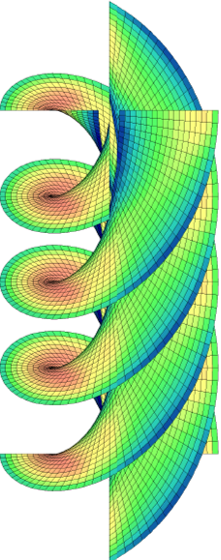
Helicopter are extremely versatile vehicles that have many unique capabilities unavailable to fixed wing aircraft. However, helicopters are inefficient in forward flight relative to a fixed wing aircraft. The fastest production helicopter, the Westland Lynx, holds the helicopter speed record of 216 knots, or about 250 mph, while commercial airliners regularly cruise efficiently at velocities over 600 mph. One of the challenges to efficient forward flight in helicopters is the rapid rise in induced power at high speed, in part due to the requirement to maintain roll trim. Previous studies have shown that compound helicopters, such as the coaxial rotor used on the X2 technology demonstrator or the wing-rotor system used on the Cheyenne helicopter, offer large power reductions relative to conventional single rotor helicopters.

We are researching the optimal aerodynamic rotor design for conventional and compound helicopters. This includes determining the blade twist, chord, and root inputs that produce the most efficient flight. We are also exploring the benefits of higher harmonic blade root control for power reduction. Conventional swashplate control features 1/rev cyclic pitch variation. Past research has shown that higher harmonic control (2/rev, 3/rev, etc.) can provide benefits both in terms of vibration suppression and power reduction. The question we wish to answer is, what aerodynamic advantages are gained with higher harmonic control in compound configurations, and what does the optimal rotor design look like?
We seek to develop computationally efficient methods that can serve as useful tools in the conceptual or preliminary design phases, in addition to gaining insight into the underlying aerodynamics of the helicopter rotor.